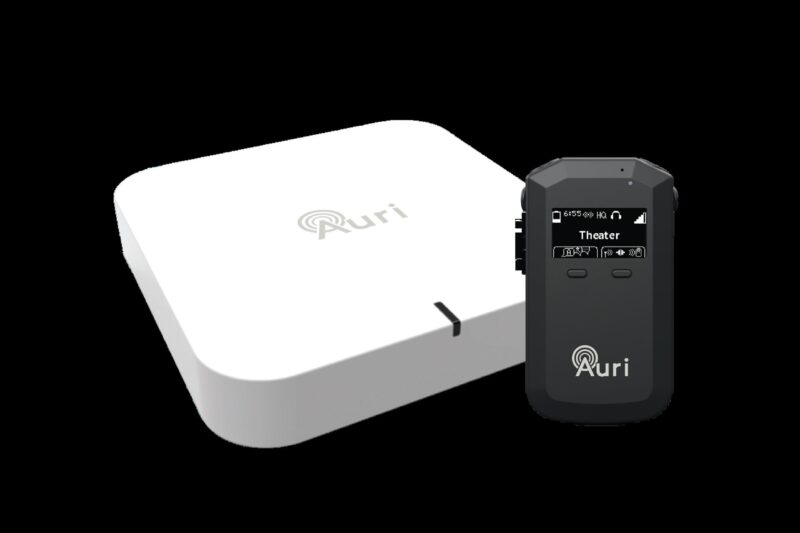Six Things to Know About the Current State of Pro Audio
![[PUBS] Things to Know About the Current State of Pro Audio (1) [PUBS] Things to Know About the Current State of Pro Audio (1)](https://www.ravepubs.com/wp-content/uploads/2024/07/PUBS-Things-to-Know-About-the-Current-State-of-Pro-Audio-1.jpg)
Navigating the Pro Audio industry can be challenging, with rapid advancements every day and numerous technical details. To help you focus on what truly matters, we’ve consulted with industry experts to identify the top six key insights in the Pro Audio sector. We hope their perspectives offer valuable guidance for both newcomers and seasoned professionals. Here are the essential takeaways from our sources:
1. “The entertainment industry continues to innovate, relying on cutting-edge technology to open up new possibilities for performers and productions. As productions and stages get larger — or incorporate multiple stages — higher wireless channel counts that deliver reliable and transparent audio are required. Also, more performers than ever are using in-ear monitors (IEMs), offering better hearing protection for performers and quiet stages for audio production teams. This trend extends beyond musicians to dancers, who trust wireless audio to synchronize their routines. Looking ahead, we’re thrilled to work with our customers to bring our industry-leading wireless technology to even more groundbreaking productions.”
—Jenn Liang-Chaboud, Manager of Entertainment Relations, Shure
2. “This is an exciting time for the Pro Audio industry in a few different respects. First off, just about every audio manufacturer out there offers gear that sounds at least ‘good’. Once you rule out a few extremely low-cost providers that don’t quite reach the ’sounds good’ table stakes, purchasing decisions for audio gear now rely upon how the product works (UI/UX, expandability, ecosystem, etc.) and how well it is supported. Perhaps connected to this shift is another interesting phenomenon — the overall technical knowledge that we’re witnessing out in the field around system tuning, network infrastructure, gain structure, etc. seems to be increasing. In short, customers (from church sound techs to touring engineers, etc.) are entering into the purchase consideration phase with much more knowledge and they are asking better questions overall. Rather than just running out and buying what the venue down the street is using, they are doing the work to really find the best components and system design for their application. Based on U.S. sound reinforcement market data and analyzing our own sales performance, these trends have combined to create positive momentum and a bright future. ”
—Jeff Hawley, Marketing Director, Allen & Heath
3. “We are in a transformative period for live sound, theatre and broadcast applications. New FCC regulations in regard to Wireless Multi-channel Audio Systems (WMAS) will allow manufacturers to improve the quality and latency of digital wireless audio, while maximizing spectrum efficiency. You can learn more about this exciting new technology here. On another note, I think that while audio-over-IP has been around for decades at this point, the industry has embraced standards like AES 67 and Dante to be the backbone for Pro Audio applications. It is great to see our industry owning technical expertise in digital audio networks as well as manufacturers providing solutions that are fully compatible within these standards.”
—Chris Phillips, Technical Application Engineer, Sennheiser
4. “The new Bluetooth low energy audio standard, Auracast, is getting a lot of attention in the professional audio space lately. It’s a true broadcast solution (one to many), has a large coverage area, transmits directly to hearables and wearables (lower latency), is an internationally compliant standard and delivers higher quality audio than previous Bluetooth systems. Even with all the excitement surrounding Auracast broadcast audio, solutions utilizing WIFI, infrared (IR) and radio frequency (RF) are still very popular and trusted options for assistive listening systems.”
—Brian Reilly, Regional Sales Manager, Listen Technologies
5. “One key trend in the current state of Pro Audio is the shift towards seamless integration and scalability, emphasizing one-stop solutions but also supporting partnerships/collaborations between manufacturers. The industry is increasingly adopting comprehensive platforms that incorporate advanced 3D design and prediction tools, intuitive device management and cloud technologies for robust remote monitoring. This approach ensures versatility and reliability across various environments, from expansive outdoor settings like stadiums and theme parks to indoor spaces such as hospitality venues and educational facilities. Additionally, there’s a growing focus on sustainability, aiming to enhance the efficiency and environmental impact of audio projects.”
—Lorenzo De Poi, band manager, K-array
6. “Pro Audio is becoming all about interoperability and integration, as well as flexibility and ease of operations. As the labor force in professional audio has become a mix of highly skilled professionals working full-time alongside day hires or gig employees, there’s a need to be able to fulfill a highly polished and customizable solution alongside very simple and easy-to-operate solutions. That’s why we see a mix of matrix and party line, in the cloud or on-premise, with easy-to-use interfaces but deep customization available.”
—Dave MacKinnon, VP of product management, Clear-Com
The current Pro Audio industry marked by rapid technological advancements and evolving market needs. From wireless technology that supports larger productions and in-ear monitors (IEMs) enhancing performer safety to the increasing technical expertise of users making more informed purchasing decisions, the landscape is becoming more complex and dynamic. By staying informed about the key insights shared by our industry experts, we hope you can navigate these changes more effectively and make well-informed decisions.




